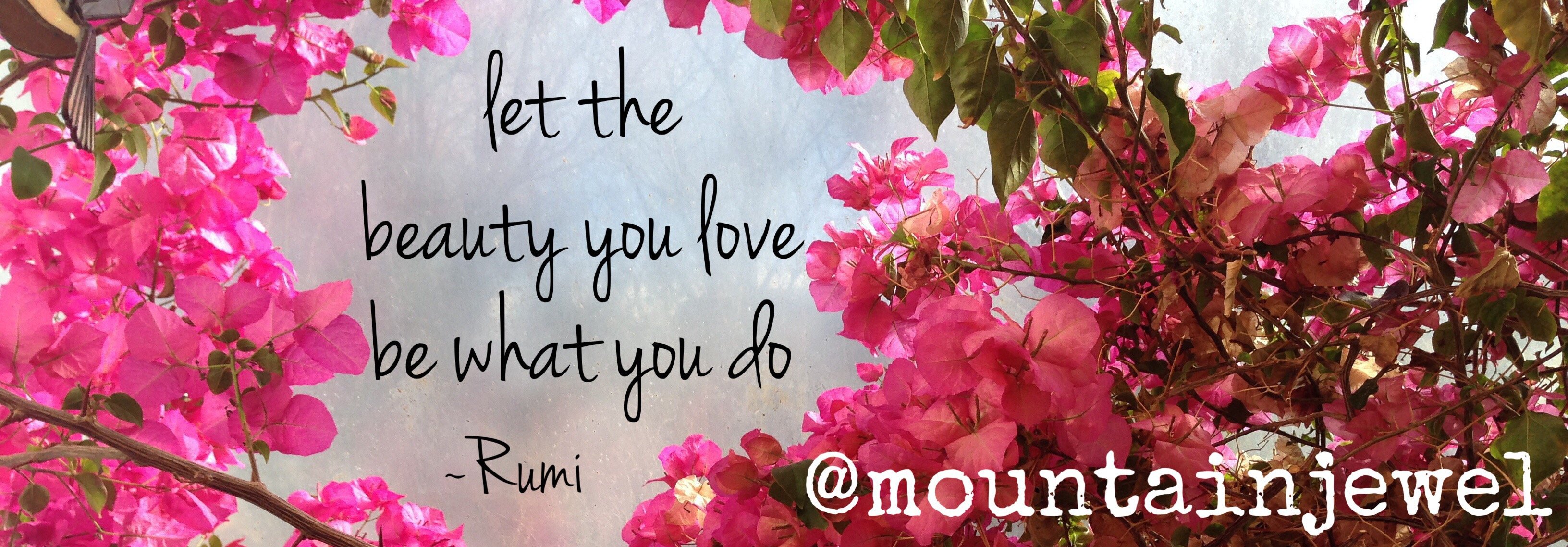
So you’ve just moved to your homestead, your new plot of land…
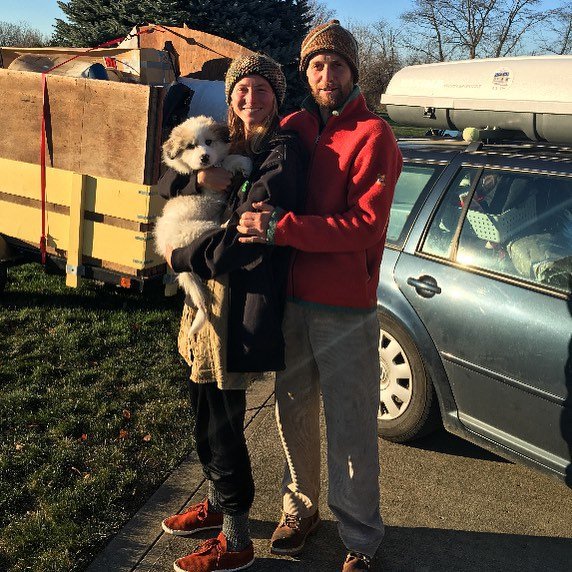
(Us the day we moved to our land!)
How do you decide where to put things or how to lay it out?
PERMACULTURE PRINCIPLE 1: OBSERVE & INTERACT
"Engaging your surroundings keeps it cycling back"

(Our plot of land when we first moved here 2 years ago. Pretty wild and overgrown! Where do we start?!)
2 Years on the Land
When we first moved here, we were really careful about not moving too fast. Moving and building step by step makes for slow and thoughtful action and allows for more opportunity to live DEBT FREE as we are not investing large amounts of money upfront before we even know what's what!
It’s human nature to want to create and move ahead, but we know that as humans we have great power to sway things in our direction. We’ve seen the devastation hasty human actions have reaped. That’s why we love Permaculture; there are a set of design principles that we can use to guide our actions toward GOOD ACTION, in case we aren’t sure how to relate to a piece of land.
For example, we only planted 2 trees the first year, and over 100 the second...
How can you know where to plant a tree (that could live over 100 years) when you first move to a place?....
Starting off, we implemented the OBSERVE & INTERACT principles foremost.
We must continually think LONG TERM (even past our own lives!). What will this land look like in 10, 20, 50, 200 years...
It makes sense, then, to not rush into action.
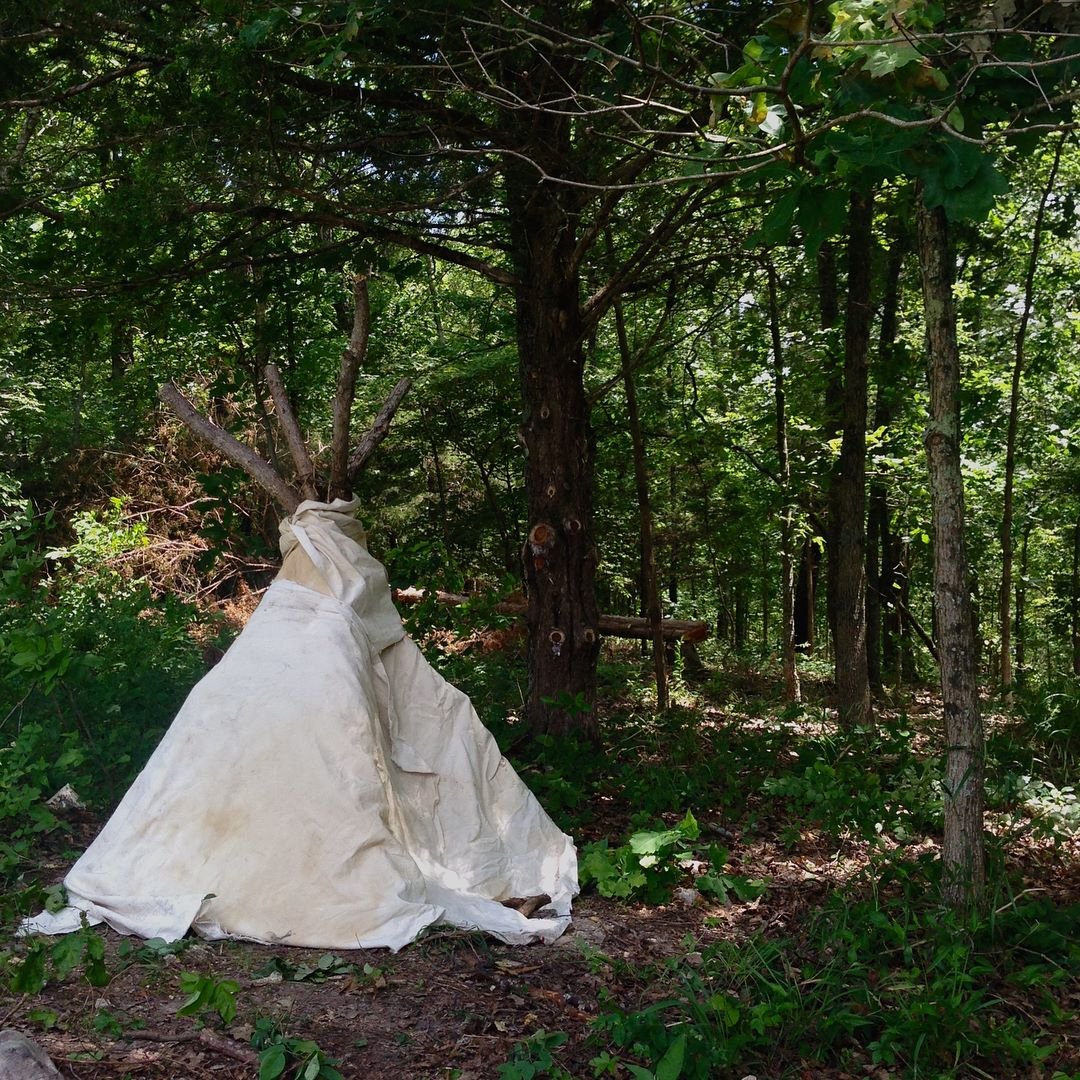
(A smoke tent on our land set up by Matt Raney during Homestead Rescue. It flows with the landscape very well, as elemental and natural buildings usually do.)
We also continually re-read through The Pattern Language by Christopher Alexander!
This is a book I learned about during my Permaculture design course and it continually blows my mind! Alexander is an architect with a truly cosmic perspective. He’s in touch with the heartbeat of the universe and his attention to detail and understanding of the flow and patterns of human life is remarkable.

In his book (and this is why we love it), he goes through hundreds of patterns to incorporate into buildings, design layouts, cities, gardens, etc to make them more user friendly. He cuts out obsolete building or design styles that don’t fit in with how the human body moves and feels good in a space and he includes with incredible breadth and inspiration patterns that enliven human life. For example, how people walk through gardens and want to sit on a bench, how people are drawn to alcoves, the fact that children need their own spaces to grow in their autonomy and creativity and so many more. He sought to make spaces that humans actually use and feel good in. Do a quick google search on these patterns if you ever plan on building anything.
Like I said, heartbeat of the universe!
(A gabian- a cage of stones- based archway and path we built about 1.5 years into designing the homestead. At this point, we knew where the entrance was and could plan a "grand entrance" accordingly. We already have a climbing rose set to grow up one side and a thornless blackberry on the other.)
Lay of the Land
The lay of the land is a very important element to consider when starting to sculpt and shape a homestead.
This is really an aesthetic, bodily thing, shaped from felt experience. Yes, we literally “get a feel for” the land and act accordingly. We tune in and ask,
“What wants to go here?”
“Where should this building go?” – okay, a little over to left then.
We want the building to fit into the landscape
Oddly enough, through doing this, the aesthetic design layout has resulted in our buildings all being along a curve stretching from the driveway all the way back to the cabin in the woods!
This layout is more a function of our lived experience than conscious thinking about it. We have laid our main and secondary pathways on the landscape, and the buildings were planned according to where foot and car traffic naturally occurs. This seems obvious and intuitive and it certainly is, but is only possible if we are acquainted with place.
The process of claiming stewardship over this piece of land that is deeded to us (a strange concept in itself) has been so rewarding. We walked across the land hundreds of times, following the path of least resistance. From this we chose the best spot for a building site. We focused on meeting the most pressing needs first by creating an outdoor living room in the thick of the garden to allow us a shady and screened in area to inhabit during the long hot summer months. After all we spend most of our time outside in the garden.
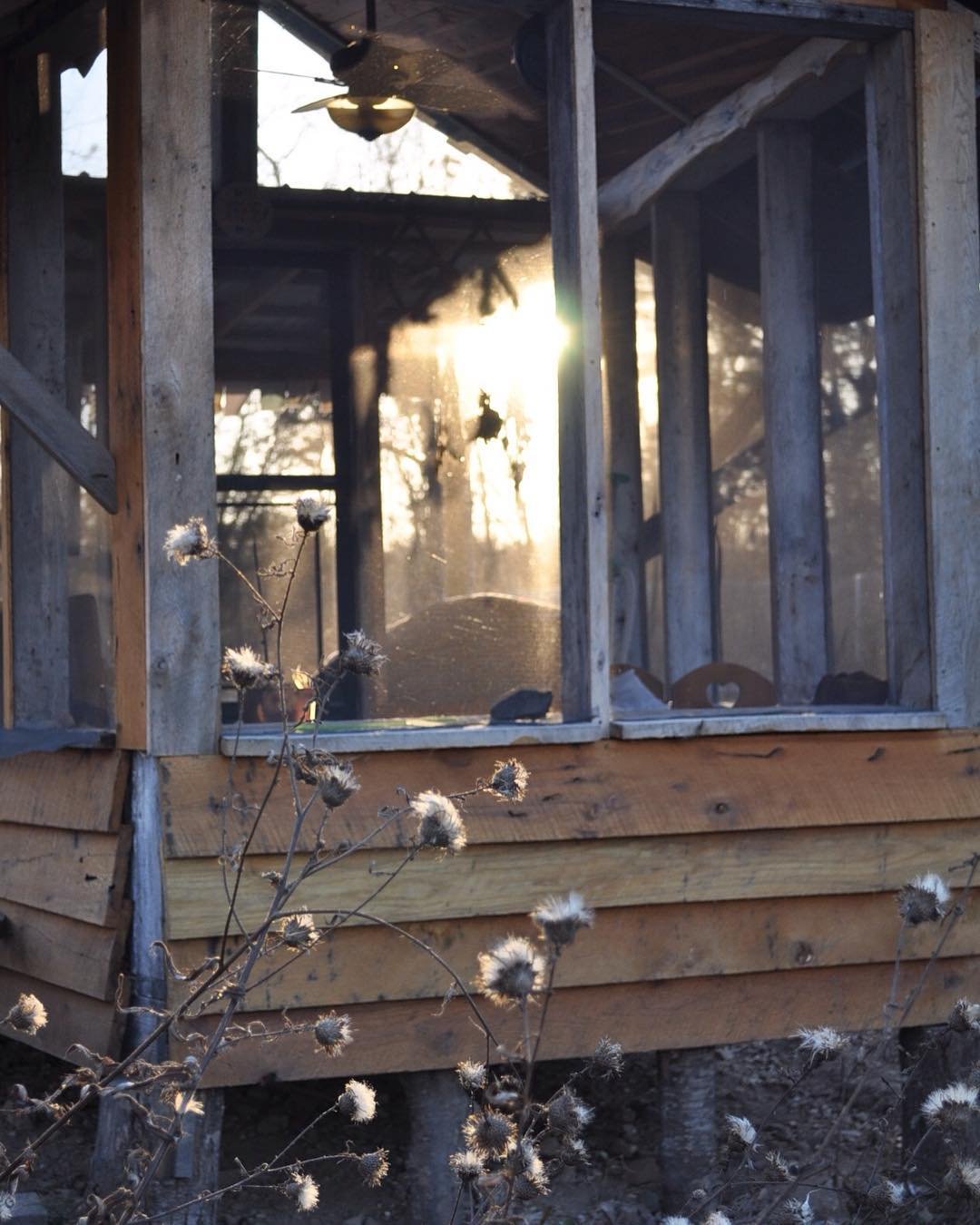
(Our screened porch gazebo which we built out of reclaimed and natural materials as a respite from the sun, bugs and as a place to hang out with a solar powered fan while working in the garden in the heat of the summer. Form fits Function!)
Paths
In fact, the paths that we used first when we lived on the homestead (when we moved here there was only a driveway up from the road to a parking area- nothing else) are no longer the paths we use day to day! Slowly as we cut through brush and put up our first shelter and composting toilet, we realized that there were more efficient travel avenues. Thus, we created new paths- the paths we’re still using today!
In addition to buildings, we’ve also learned a lot about the existing plant communities that have guided our focus for the crops we choose. For example, we have tons of native blackberries. They have thorns though! From this we gather that the species loves to grow here, but it isn’t always the most visitor friendly. We’ve worked on swapping out a large percentage of these plants for improved cultivars (in this case the Chester thornless blackberry). Likewise there are hundreds of native fruit trees growing wild, so we have begun the process of building our collection of paw paw and persimmon varieties to increase abundance and diversity.
In lieu of sounding like we totally didn’t plan this and just let it grow organically. (Don’t get us wrong, we like to let things naturally unfold), I’d like to point out that we did have a sort-of plan in mind as we were building. Sort-of an idea of “what goes where” and how the dreams we have could fit onto the land we are on. We also kept in mind all of the interrelationships between things. Like that plant benfits this one and will do well here and this building is for X purpose and fits well here... That being said, IT IS EXTRAORDINARILY important to be open to new feedback from the land. The land knows best, and we humans are just the stewards here, not the main drivers.
It’s also worth abundantly mentioning that our minds are so small in the scope of what is possible and we can learn new things that can drastically change our lives at any point, so we shouldn’t have “too-fixed” ideas about what we want to accomplish either.
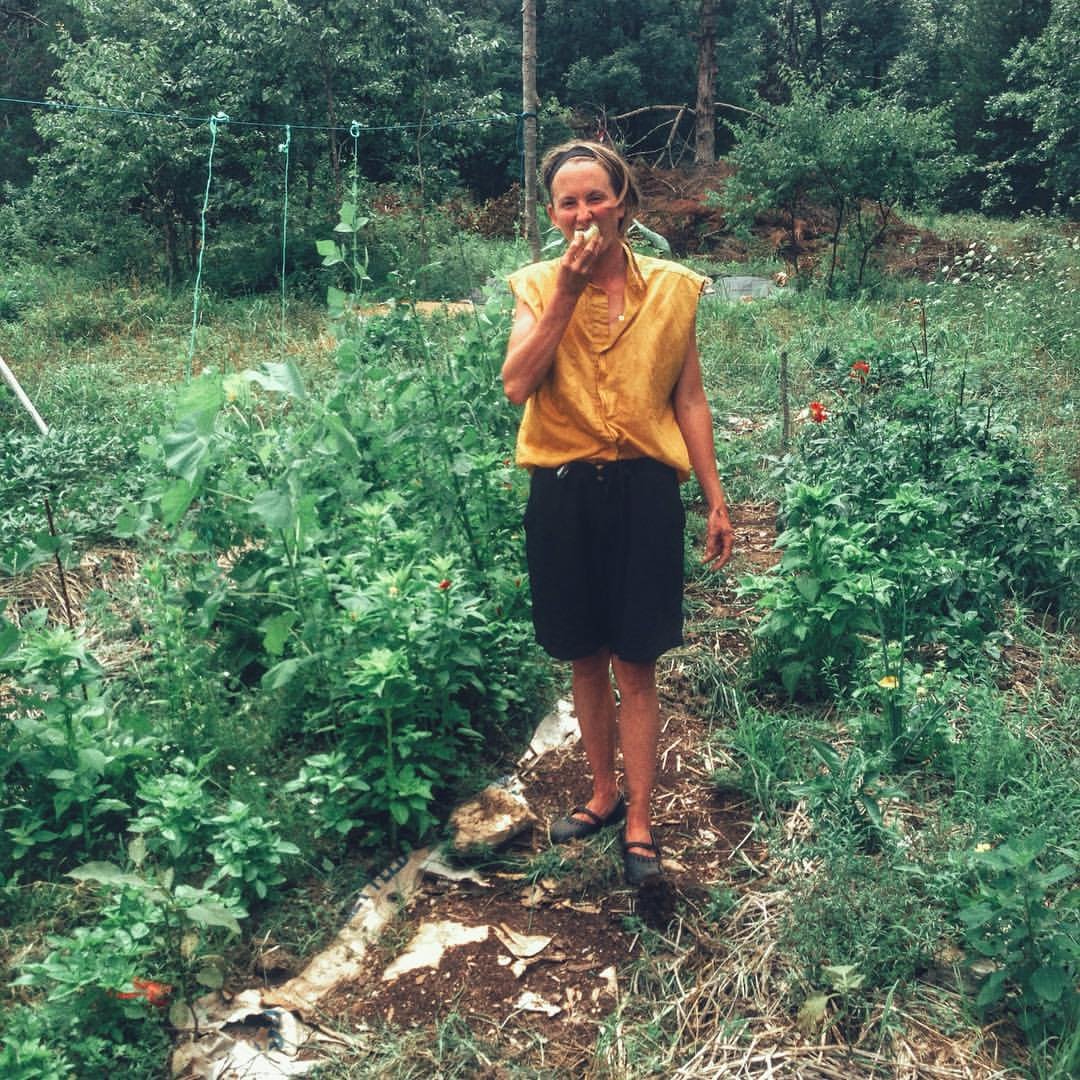
(In the gardens, a spot picked out the first year for annual production gardening that has fit in well with the flow of the homestead.)
Thanks for reading! We hope this was Inspiring!!
Please resteem, upvote and comment if you feel it!
